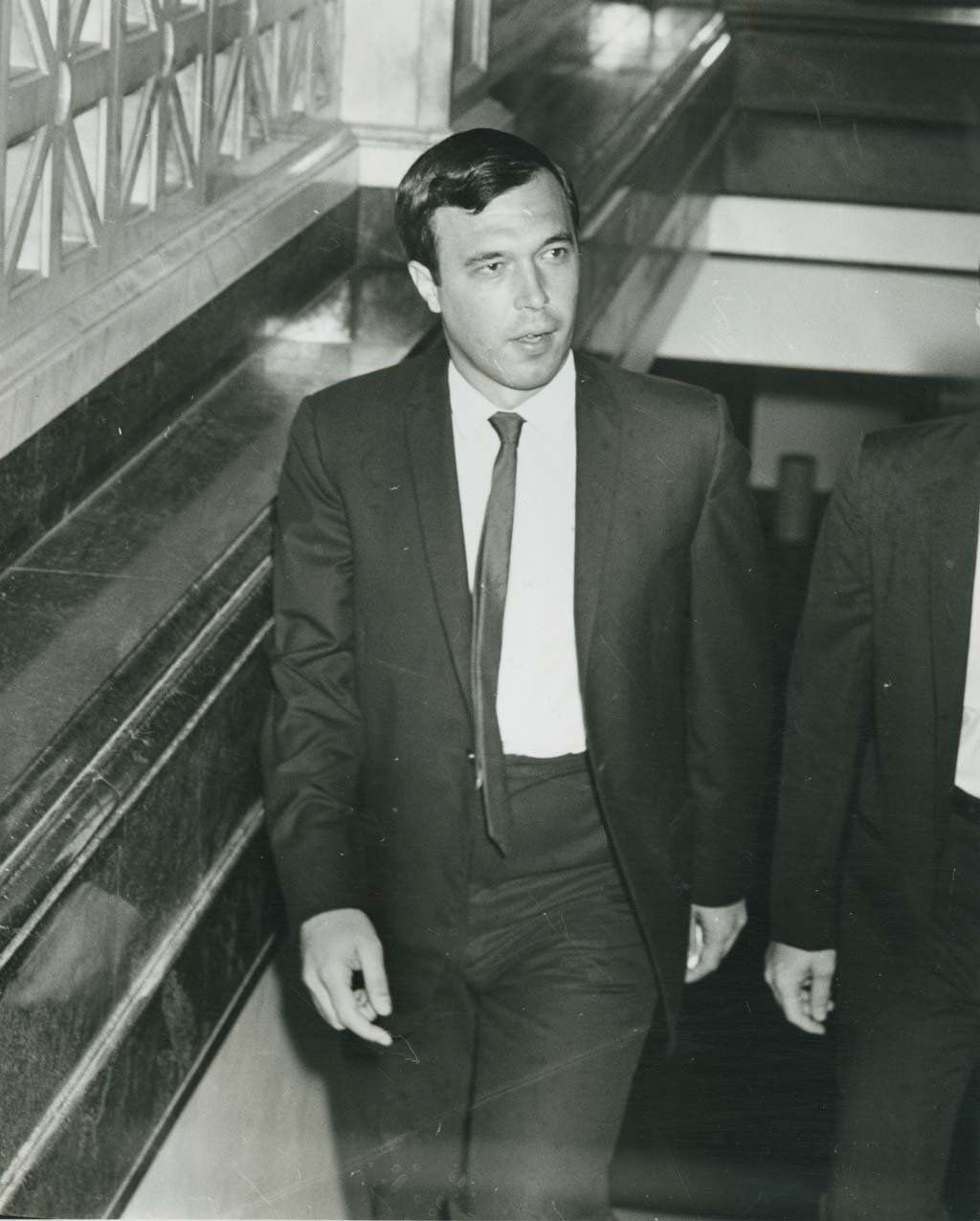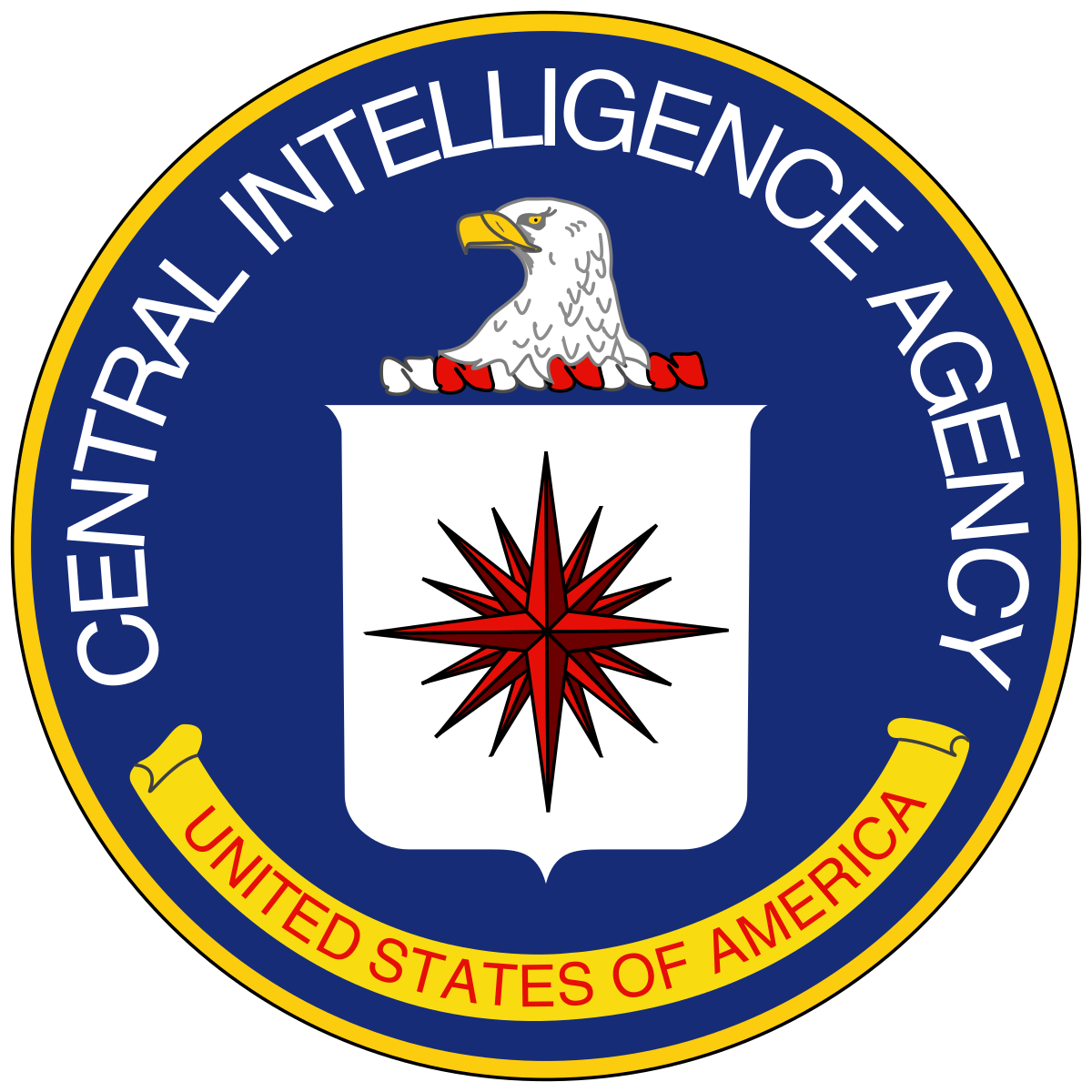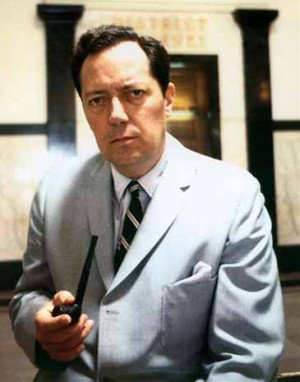Post by Michael Capasse on Oct 4, 2021 7:15:07 GMT -5
The Trial of Clay Shaw

The trial of Clay Shaw began on Jan. 29, 1969. Jury selection was the first order of business, James Alcock and Assistant D.A. Alvin Oser for the state,
Judge Edward Aloysius Haggerty presiding, while the Defense team was led by one of the finest attorneys in New Orleans, F. Irvin Dymond.
The panel was selected in a matter of days, followed by opening statements, and the first witnesses were called on February 6, 1969.
Garrison was very careful as to who would testify, and was unaware of a certain individual setup to sabotage the prosecution's case, Charles Spiesel.
Spiesel had told the team he met Ferrie in the French Quarter, then later went to Shaw's residence, where a plot to assassinate the president was discussed.
What the Garrison team did not know, was the bomb shell he would drop on the stand describing years of hypnotism done to him by individuals he could not
identify, as well the mental torment and paranoia he experienced, coupled with the possible switching of his daughter with someone else. Jim later wrote:
"...For one very long moment, while I am sure that my face revealed no concern, I was swept by a feeling of nausea. I realized that the clandestine operation
of the opposition was so cynical, so sophisticated, and, at the same time, so subtle, that destroying an old-fashioned state jury trial was very much like
shooting a fish in a barrel with a shotgun" Once Spiesel was out of the way, a series of witnesses were called that built a case that could not be disputed.
The first witnesses called by the prosecution, were the men from Clinton LA that had seen the long black Cadillac with Clay Shaw, David Ferrie, and Lee Oswald.
Oswald was observed standing in the voter registration line while the other two waited in the car. This was corroborated on the stand by 2 witnesses.
Each man pointed to Clay Shaw as the person they saw in the car. Reeves Morgan, a former state legislator, testified he notified the FBI after 11/22, reporting
Oswald in the area and was told they were aware of it. He heard nothing further. The other witness, Town Marshall, John Manchester, said he actually spoke
to the driver, "I walked over and talked to the man behind the wheel of the car,” said Manchester. “He was a big man, gray hair, ruddy complexion.
An easy-talking man, he said he was a representative of the International Trade Mart in New Orleans.”
Next Vernon Bundy, a heroin addict, sitting at the seawall at Lake Pontchartrain preparing his fix. He had not yet shot because he was spooked by a man approaching.
In a short time, another man he could later identify as Lee Oswald approached. The two spoke loudly before the 1st handed to Oswald what looked like a bundle of cash.
After both had left the scene, Bundy recounted how he used one of the yellow Castro fliers to wrap his heroin kit. Yet, there was one other important factor he volunteered.
On the stand, and he had not told his interviewers, this older man had a very specific way of walking he could identify, and illustrated this with permission of the court.
+++++++++++++++++++++++++++++++++++++++++++++++
On the Trail of the Assassins | Jim Garrison
"...Without any warning, he asked the judge to allow him to demonstrate how he knew it was Clay Shaw who was at the lakefront.
“Would you have the gentleman there go to the back of the courtroom?” he asked.
The judge, after a surprised moment of hesitation, nodded his assent. Shaw complied, with bailiffs on each side of him.
Bundy stepped down from the witness chair, then turned Shaw’s chair around and sat in it sideways, looking toward the entrance of the court where Shaw was.
“Would the gentleman approach me?” asked Bundy. Shaw and the bailiffs moved forward.
“Here I am on top of the seawall with my cooker,” said Bundy. Shaw, looking irritated and puzzled, walked down the center aisle of the courtroom.
He watched the way Shaw’s foot twisted when he walked. This is how “I identified this man the next time I saw him,” he said.
Everyone in the courtroom was able to observe that the tall defendant had a slight limp—the result, he later explained, of a back injury received in the
Army when lifting a hospital cot. Afterward, it was plain that courtroom attaches and jurors alike had been impressed with Vernon Bundy’s testimony.
It certainly was the first time I ever saw a witness take over the courtroom during a trial. I should add that until Bundy told me what he had seen when
Shaw met Lee Oswald on the lakefront, I had no idea that Shaw walked with an almost imperceptible limp.

The trial of Clay Shaw began on Jan. 29, 1969. Jury selection was the first order of business, James Alcock and Assistant D.A. Alvin Oser for the state,
Judge Edward Aloysius Haggerty presiding, while the Defense team was led by one of the finest attorneys in New Orleans, F. Irvin Dymond.
The panel was selected in a matter of days, followed by opening statements, and the first witnesses were called on February 6, 1969.
Garrison was very careful as to who would testify, and was unaware of a certain individual setup to sabotage the prosecution's case, Charles Spiesel.
Spiesel had told the team he met Ferrie in the French Quarter, then later went to Shaw's residence, where a plot to assassinate the president was discussed.
What the Garrison team did not know, was the bomb shell he would drop on the stand describing years of hypnotism done to him by individuals he could not
identify, as well the mental torment and paranoia he experienced, coupled with the possible switching of his daughter with someone else. Jim later wrote:
"...For one very long moment, while I am sure that my face revealed no concern, I was swept by a feeling of nausea. I realized that the clandestine operation
of the opposition was so cynical, so sophisticated, and, at the same time, so subtle, that destroying an old-fashioned state jury trial was very much like
shooting a fish in a barrel with a shotgun" Once Spiesel was out of the way, a series of witnesses were called that built a case that could not be disputed.
The first witnesses called by the prosecution, were the men from Clinton LA that had seen the long black Cadillac with Clay Shaw, David Ferrie, and Lee Oswald.
Oswald was observed standing in the voter registration line while the other two waited in the car. This was corroborated on the stand by 2 witnesses.
Each man pointed to Clay Shaw as the person they saw in the car. Reeves Morgan, a former state legislator, testified he notified the FBI after 11/22, reporting
Oswald in the area and was told they were aware of it. He heard nothing further. The other witness, Town Marshall, John Manchester, said he actually spoke
to the driver, "I walked over and talked to the man behind the wheel of the car,” said Manchester. “He was a big man, gray hair, ruddy complexion.
An easy-talking man, he said he was a representative of the International Trade Mart in New Orleans.”
Next Vernon Bundy, a heroin addict, sitting at the seawall at Lake Pontchartrain preparing his fix. He had not yet shot because he was spooked by a man approaching.
In a short time, another man he could later identify as Lee Oswald approached. The two spoke loudly before the 1st handed to Oswald what looked like a bundle of cash.
After both had left the scene, Bundy recounted how he used one of the yellow Castro fliers to wrap his heroin kit. Yet, there was one other important factor he volunteered.
On the stand, and he had not told his interviewers, this older man had a very specific way of walking he could identify, and illustrated this with permission of the court.
+++++++++++++++++++++++++++++++++++++++++++++++
On the Trail of the Assassins | Jim Garrison
"...Without any warning, he asked the judge to allow him to demonstrate how he knew it was Clay Shaw who was at the lakefront.
“Would you have the gentleman there go to the back of the courtroom?” he asked.
The judge, after a surprised moment of hesitation, nodded his assent. Shaw complied, with bailiffs on each side of him.
Bundy stepped down from the witness chair, then turned Shaw’s chair around and sat in it sideways, looking toward the entrance of the court where Shaw was.
“Would the gentleman approach me?” asked Bundy. Shaw and the bailiffs moved forward.
“Here I am on top of the seawall with my cooker,” said Bundy. Shaw, looking irritated and puzzled, walked down the center aisle of the courtroom.
He watched the way Shaw’s foot twisted when he walked. This is how “I identified this man the next time I saw him,” he said.
Everyone in the courtroom was able to observe that the tall defendant had a slight limp—the result, he later explained, of a back injury received in the
Army when lifting a hospital cot. Afterward, it was plain that courtroom attaches and jurors alike had been impressed with Vernon Bundy’s testimony.
It certainly was the first time I ever saw a witness take over the courtroom during a trial. I should add that until Bundy told me what he had seen when
Shaw met Lee Oswald on the lakefront, I had no idea that Shaw walked with an almost imperceptible limp.













